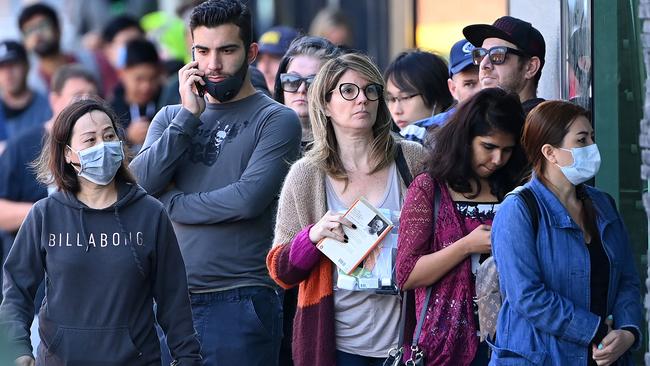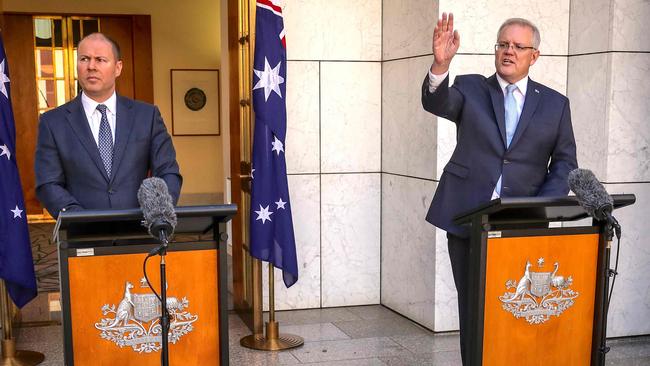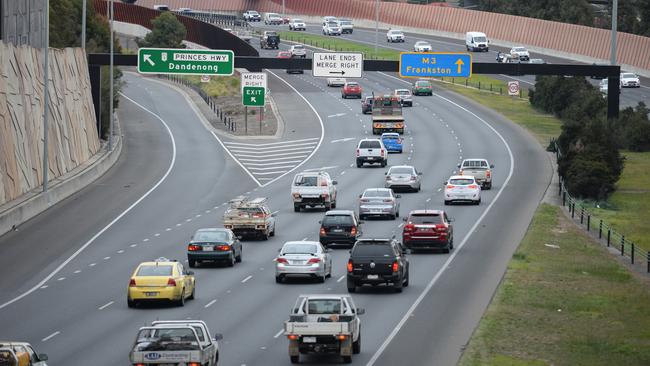Terry McCrann: We need a very different strategy for the country after the coronavirus
Our economic growth and prosperity has rested on three foundations — population growth, construction and China. Now we have to leave the lockdown to a new and very different Australia, writes Terry McCrann.

Terry McCrann
Don't miss out on the headlines from Terry McCrann. Followed categories will be added to My News.
OK, the virus might not yet be beaten but it is now blindingly clear we are not going to have the “hundreds of thousands of deaths” that were being predicted by computer models and hysterical experts.
Or should that be expert hysterics? Our universities certainly know how to churn them out. Churn out educated adults? Nah, not so much.
Right now there are two big questions facing our, for want of a better word, “leaders”, but they are questions that should concern all 25 million of us.
And yes, there will still be 25 million of us, for a while yet.

On the one hand the virus isn’t going to significantly reduce that number; and on the other we ain’t going to add to it — courtesy of hundreds of thousands of immigrants flooding in — any time soon, if at all.
That is a core part of the second big question we will have to face, and that there is precious little sign of anyone even beginning to think about.
But first, the first question: the “exit strategy” from the lockdown and the first deliberately government-mandated recession — if not depression, we will have to wait to find out which — in our entire history.
That’s, whether that history is defined as the “modern interventionist government policy” world of the 75 years since the end of World War II; the 119 years of a united Australia; the 232 years of European settlement; or the 50,000 or so years of human occupation.
Never has a government set out to quite deliberately drive the economy into shocking, deep recession; to force businesses to close and many if most to permanently collapse; and hundreds of thousands of workers to lose their jobs, again many permanently.
Yes, it was and is being done with the “best of intentions” — to stop those hundreds of thousands of predicted deaths. But the best of intentions don’t offset the brutal reality.
Further, it has not been well understood, if at all, that this bears critically on both the timing and structure of the “exit strategy” and what we “exit into”.
It is most definitely not like just turning on the tap again; or pressing “play” on the “digital device of life”, which is now in freeze frame. That by ending the lockdown we’d all pick up immediately and seamlessly from some point back in early-to-mid March.
The whole point of the lockdown was to “flatten the curve” of infections so that our hospitals would not be overwhelmed by virus victims.
Exactly the same applies in reverse with the economy and people’s jobs, businesses and lives. The longer the exit is delayed, the greater will be the irreparable damage.
That is why the core decision cannot be “virus first, economy second”. Yes, preference must be given to beating the virus to optimise both virus and economic outcomes. The worst for both would be that “second wave” forcing a second lockdown.
But there is clearly a crossover point where there will be just too much damage to the economy and too little upside left in relation to the virus.
This also goes critically to the actual dynamics of the lockdown exit — what the government does with stimulus and direct support to business, for example.
An obvious example, to be repeated thousands of less public and dramatic times: does it save Virgin, and if so, how?
We cannot pick up where we left off. We are going to have huge and permanent deficits and debt across all governments, federal and state.
Jobless levels are going to be dramatically and also permanently higher. In a sick joke, possible only in the taxpayer-funded security of the Canberra bubble, the ABS told us on Thursday that jobs and jobless numbers were actually just fine. Back in the first half of March.

So the exit strategy blends into what exactly we exit to. It is not going to be where we were just a few months ago.
For the past 20 years, our economic growth and prosperity has rested on three foundations. They were immigration-driven developed world record population growth; property and infrastructure construction; and China, buying our iron ore and coal and selling us seemingly ever-cheaper consumer goods.
Since the GFC it’s also depended on a — global — addiction to cheap money and ever-rising asset (shares and property) prices, but that’s mostly another and complicated story.
Like all addictions — and I’m talking about the broader one, around the population Ponzi, supplanted by the cheap money — they eventually run too far ahead of the drug. That was clearly happening before the virus hit.
We have to exit to a new and very different Australia.
One that can work without massive population growth every year; one that can work without massive construction of new apartments and tolled “freeways”.
And one that can do that while handling all the wreckage from what’s going on right now. Think about it. Please.
